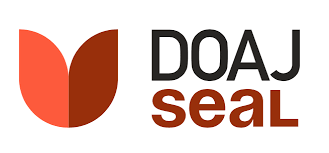JMIR Research Protocols
Protocols, grant proposals, registered reports (RR1)
Editor-in-Chief:
Amy Schwartz, MSc, Ph.D., Scientific Editor at JMIR Publications, Ontario, Canada
Impact Factor 1.4 CiteScore 2.4
Recent Articles

Differentiating between tuberculosis and malignancy as the cause of an exudative lymphocyte predominant pleural effusion is difficult due to similarities in the cellular and biochemical characteristics of the pleural fluid in both conditions. Microbiological tests in tubercular pleural effusions have a poor diagnostic yield, and the long turnaround time for results prevents an early diagnosis. The diagnosis of malignant pleural effusion (MPE) is hampered by a variable yield of pleural fluid cytology and closed pleural biopsy and the fact that thoracoscopy may not be readily available or feasible in each patient. A key gap in the existing knowledge is the performance of the serum lactate dehydrogenase to pleural adenosine deaminase ratio (ie, “cancer ratio”; CR) in differentiating between tuberculous and MPE in a high tuberculosis prevalence country like India, although its use has been well established in Western literature. The CR may find a practical application in the community health care settings in low-income countries without ready access to biopsy.

Pediatric patients with cancer have limited options to self-manage their health while they are undergoing treatments in the hospital and after they are discharged to their homes. Extended reality (ER) using head-mounted displays has emerged as an immersive method of improving pain and mental health and promoting health-enhancing physical activity among a variety of clinical groups, but there is currently no established protocol for improving both physical and mental health in pediatric cancer rehabilitation.

Alabama has the second highest rate of cardiovascular disease (CVD) mortality of any US state and a high prevalence of CVD risk factors such as hypertension, diabetes, obesity, and smoking. Within the state, there are disparities in CVD outcomes and risk factors by race or ethnicity and geography. Many primary care practices do not have the capacity for full-scale quality improvement (QI) initiatives. The Alabama Cardiovascular Cooperative (ALCC), which includes academic and community stakeholders, was formed to support primary care practices to implement QI initiatives to improve cardiovascular health. The ALCC is implementing a Heart Health Improvement Project (HHIP) in primary care practices with suboptimal rates of blood pressure (BP) control and tobacco use screening.


HIV risk behavior in women who use drugs is related to myriad psychosocial issues, including incarceration. The experience of incarceration elevates women’s HIV risk by disrupting social networks, housing, employment, and access to health care. During the COVID-19 pandemic, changes in criminal-legal practices resulted in decreased incarceration, especially among women. These changes may have largely altered HIV risk among women who use drugs, depending on their access to care in the community.

Caregiver-involved treatments for adolescents with alcohol use disorder and co-occurring disorders (AUD+CODs) are associated with the best treatment outcomes. Understanding what caregiving practices during treatment improve core adolescent treatment targets may facilitate the refinement and scalability of caregiver-involved interventions. Caregiving is dynamic, varying by context, affect, and adolescent behavior. Caregiver-involved treatments seek to change momentary interactions between caregivers and their adolescents. Accordingly, this protocol outlines a dyadic ecological momentary assessment (EMA) study to examine caregiving practices during AUD+CODs treatment and their associations with adolescent core treatment targets (eg, alcohol craving and use, motivation to reduce or stop drinking, and internalizing and externalizing symptoms).

There is a need to address the implementation of technological innovation into emergency medical services to facilitate and improve information exchange between prehospital emergency care providers, command centers, and hospitals during major incidents to enable better allocation of resources and minimize loss of life. At present, there is a lack of technology supporting real-time information sharing in managing major incidents to optimize the use of resources available.

Muscle mass and strength are severely compromised in patients diagnosed with multiple myeloma, such that the risk of poor overall survival increases as the prevalence of low muscle mass, also known as sarcopenia, increases. Additionally, at the time of autologous stem cell transplant (ASCT), 51% of patients experience low muscle mass and strength, which can prolong hospitalization and lead to increased risk of obesity, insulin resistance, lowered physical function, and poor quality of life.

The COVID-19 pandemic has exposed a devastating youth mental health crisis in the United States, characterized by an all-time high prevalence of youth mental illness. This crisis is exacerbated by limited access to mental health services and the reduction of mental health support in schools. Mobile health platforms offer a promising avenue for delivering tailored and on-demand mental health care.

Remotely delivered lifestyle interventions have emerged to increase the reach and accessibility of traditional interventions that involve numerous in-person visits. Remote interventions can be delivered synchronously via videoconference software or phone or asynchronously via online platforms. Asynchronously delivered interventions are convenient and flexible in that they allow people to participate at any time and as such, they may be more sustainable. Evidence for asynchronous interventions is needed given their potential for convenience and sustainability, which may have implications for weight loss maintenance.


Health-promoting universities are dedicated to fostering learning environments and organizational cultures that support the physical and mental well-being of students, faculty, and staff. As students constitute the largest group within the university community, any policy intervention targeting them is likely to have a significant impact on the university as a whole.
Preprints Open for Peer-Review
Open Peer Review Period:
-
Open Peer Review Period:
-
Open Peer Review Period:
-













